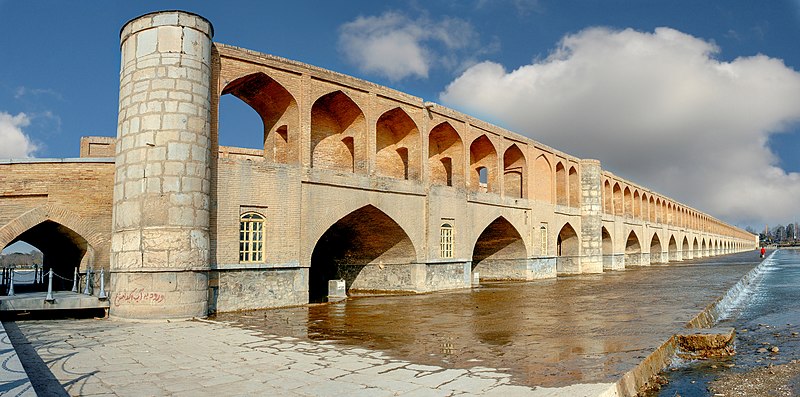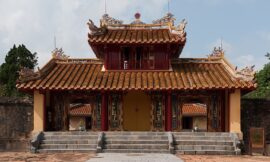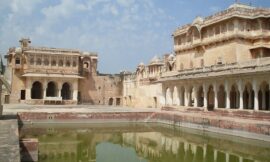Si-o-se-pol, also known as the Allahverdi Khan Bridge, is a magnificent architectural masterpiece that spans the Zayandeh River in Isfahan, Iran. Constructed during the Safavid era in the 17th century, this iconic bridge stands as a symbol of Persian ingenuity, engineering prowess, and artistic excellence, making it one of the most celebrated landmarks in Iran and a UNESCO World Heritage Site.
Translated as the “Bridge of Thirty-Three Arches,” Si-o-se-pol is renowned for its stunning design, intricate tile work, and grand scale. Stretching over 295 meters in length and featuring 33 arches, the bridge is a testament to the skill and craftsmanship of Persian artisans, who meticulously crafted each arch, column, and balustrade with precision and care.
One of the most striking features of Si-o-se-pol is its double-tiered design, which consists of a lower level that serves as a pedestrian walkway and an upper level that accommodates carriages, horses, and pedestrians. The bridge’s upper level is adorned with pavilions, alcoves, and benches, providing visitors with stunning panoramic views of the river and surrounding landscape.
The architecture of Si-o-se-pol is a stunning blend of Persian, Islamic, and European influences, with elements such as domed pavilions, arched passageways, and ornate tile work that reflect the cultural diversity and artistic exchange that flourished during the Safavid era. The bridge’s facade is adorned with intricate frescoes, calligraphy, and geometric patterns, creating a visual feast for the eyes and a testament to the beauty and complexity of Persian art and architecture.
Si-o-se-pol is also famous for its innovative design, which incorporates a series of sluice gates and water channels that regulate the flow of the Zayandeh River. During the dry season, the bridge serves as a dam, allowing water to be diverted to the city’s irrigation system and providing a vital source of water for agriculture and drinking. In the spring and summer months, the sluice gates are opened, allowing water to flow freely under the bridge and creating a tranquil oasis in the heart of Isfahan.
Throughout its history, Si-o-se-pol has served as more than just a crossing over the river; it has been a hub of cultural, social, and economic life in Isfahan. The bridge was once lined with bustling markets, tea houses, and caravanserais, where merchants, travelers, and locals would gather to buy, sell, and socialize. Today, the bridge continues to be a popular gathering place for visitors and locals alike, who come to enjoy the beauty of the river, the shade of the trees, and the company of friends and family.
In addition to its cultural and social significance, Si-o-se-pol is also a popular tourist attraction, drawing visitors from around the world with its stunning beauty, historical significance, and vibrant atmosphere. Whether strolling along its length, admiring its architecture, or simply enjoying the serenity of the river, visitors to Isfahan are sure to be captivated by the timeless charm and beauty of Si-o-se-pol.



